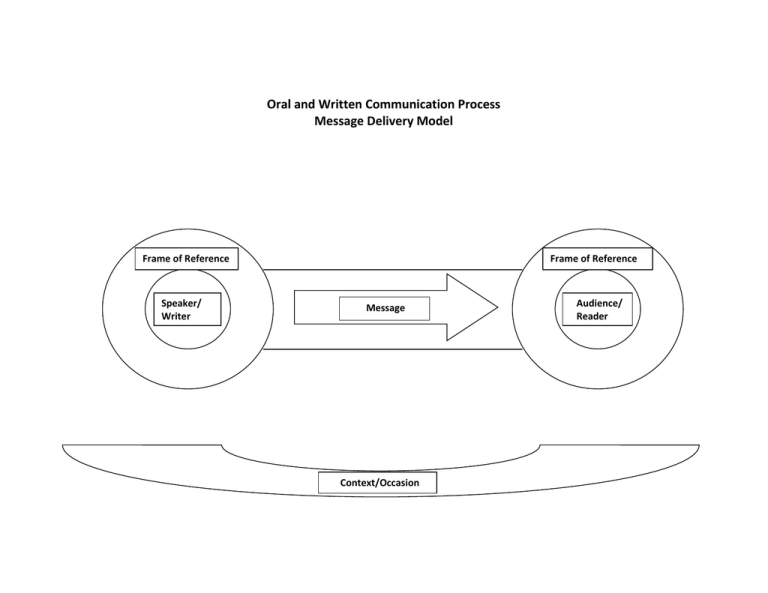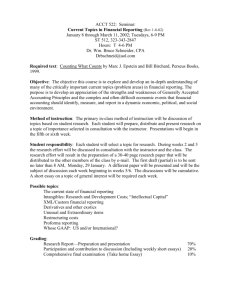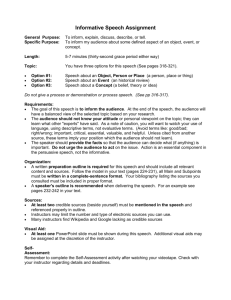Communication Model and Explanation
advertisement

Oral and Written Communication Process Message Delivery Model Frame of Reference Speaker/ Writer Frame of Reference Message Context/Occasion Audience/ Reader Model Explanation The speaker/writer has a message he or she wants to deliver to an audience/reader. He or she puts the message in communication codes (words, movements, inflections, etc.). The speaker/writer makes choices about how the message is expressed based on his/her frame of reference. The frame of reference is made up of our past experiences, education, intellectual processes, physical condition-everything that makes us who we are. It is useful to see it as a screen through which we filter the meanings which we want to express and interpret the meanings of the messages which we receive. Each frame of reference is unique to every individual. The communication also takes place within a context which includes factors such as the larger culture, a particular physical setting, the relationship between the speaker/writer and the audience, and the occasion in which the communication takes place. All these factors also affect the nature of the communication exchange. If one element of the model changes, the communication exchange also changes. For example, in a lecture classroom it is conventional for the instructor to stand at the front of the classroom and talk to the students of the class who wait to be recognized in order to respond to or question the messages the instructor sends. If the instructor chooses to sit at the desk instead of stand in front of it, the nature of every other part of the communication of exchange would change. If students shouted out comments and questions whenever they choose, the other parts of the exchange would be different again. If the instructor is a confident and dynamic lecturer, the communication exchange would be structured in one way, and if he or she lacked selfconfidence, the exchange would be different once again. In order to be an effective communicator in terms of this model, a speaker/writer must adapt his or her communication to the nature of the message, the frames of references of the audience members, and the context of the situation. Analyzing and planning a communication exchange strategically makes it more effective in delivering a message to an audience so that it will be understood, and perhaps, accepted and acted upon.







